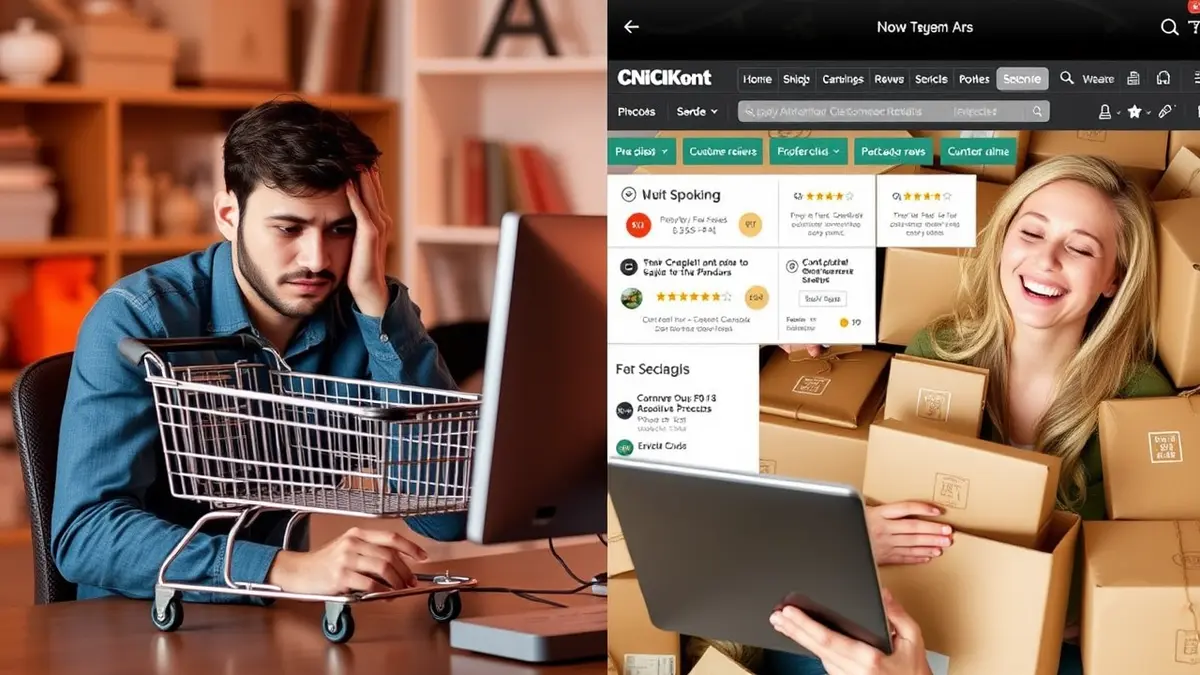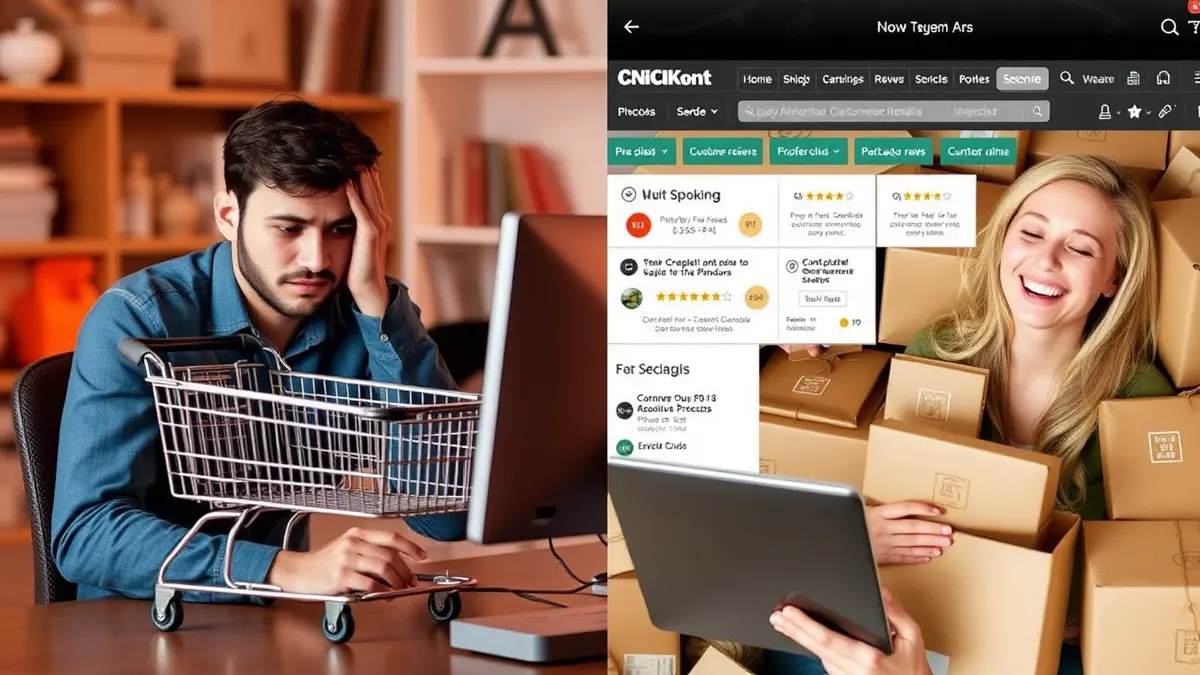Discover whether Amazon truly offers the lowest prices and learn practical strategies to compare prices effectively, ensuring you always get the best deals. For budget-conscious shoppers who want to maximize their savings, this guide equips you with the tools and knowledge to make informed purchasing decisions.
What You’ll Learn
- The Myth of Amazon’s Price Supremacy
- Why Amazon’s Prices Fluctuate So Much
- Price Comparison Websites and Extensions
- Leveraging CamelCamelCamel and Keepa
- Checking Competitors: Beyond Amazon
- Utilizing Google Shopping and Other Search Engines
- The Power of Price Alerts
- Considering Shipping Costs and Prime Benefits
- The Hidden Costs: Time vs. Money
- When to Buy: Timing Your Purchases
- Don’t Forget Coupons and Promo Codes
- The Wishmerge Advantage
- Putting It All Together: A Real-World Example
- Final Thoughts: Smart Shopping in the Digital Age
The Myth of Amazon’s Price Supremacy
Amazon. The behemoth of online retail. We’ve all been there- automatically heading to Amazon first when we need something. It’s convenient, has a vast selection, and offers fast shipping with Prime. But is it always the cheapest? The short answer: nope.
It’s a common misconception that Amazon consistently offers the lowest prices. The truth is far more nuanced. While Amazon is often competitive, other retailers and online marketplaces frequently undercut its prices, especially on specific items or during sales events. That robotic vacuum cleaner you’ve been eyeing? Might be cheaper elsewhere. Maybe way cheaper.
A TechCrunch piece last spring hinted at the increasing competition among online retailers, putting downward pressure on prices across the board. So yeah, don’t automatically assume the big A has the best deal. It pays to shop around.
Why Amazon’s Prices Fluctuate So Much
Ever notice how the price of an item on Amazon can change multiple times in a single day? Dynamic pricing is the name of the game. Amazon uses algorithms to adjust prices based on factors like demand, competitor pricing, time of day, and even your browsing history. Crazy, right?
This means that the price you see one minute might not be the price you see the next. These algorithms are sophisticated, constantly scanning the web to stay competitive. Sometimes, it seems almost predatory (but hey, that’s capitalism!). This volatility underscores the importance of monitoring prices and using tools to track changes over time.
Price Comparison Websites and Extensions
Okay, so you know Amazon isn’t always the cheapest. Now what? Enter price comparison websites and browser extensions. These tools do the heavy lifting for you, automatically searching multiple retailers to find the lowest price on a given product. Think of them as your personal digital bargain hunters.
Some popular options include Google Shopping (we’ll get to that later), PriceGrabber, and Shopzilla. Browser extensions like Honey (does more than just price tracking) and Rakuten (offers cashback too!) can also be incredibly useful, alerting you to lower prices as you browse.
Leveraging CamelCamelCamel and Keepa
If you’re serious about finding the best deals on Amazon, CamelCamelCamel and Keepa are your secret weapons. These websites track the price history of products sold on Amazon, allowing you to see how prices have changed over time. This is invaluable for determining whether a current price is a good deal or if it’s likely to drop further.
You can set up price alerts to be notified when a product reaches your desired price. Honestly? This never worked for me until I realized I needed to confirm my email address after setting the alert. Rookie mistake, I know.
CamelCamelCamel: A Closer Look
CamelCamelCamel provides detailed price charts, showing the highest, lowest, and average prices for a product. It also tracks prices from third-party sellers, which can sometimes offer even better deals than Amazon itself.
Keepa: Another Powerful Tool
Keepa offers similar functionality to CamelCamelCamel, with the added benefit of browser extensions that display price history directly on the Amazon product page. This makes it incredibly easy to see at a glance whether a product is currently a good buy.
Checking Competitors: Beyond Amazon
Don’t limit your price comparisons to just Amazon and a few price comparison websites. Branch out and check the websites of major retailers like Walmart, Target, Best Buy, and eBay. You might be surprised at the deals you can find. Also, don’t forget smaller, niche retailers that specialize in the product you’re looking for. They may offer better prices or exclusive discounts.
Utilizing Google Shopping and Other Search Engines
Google Shopping is a powerful tool for comparing prices across a wide range of retailers. Simply search for the product you’re looking for, and Google Shopping will display a list of prices from different stores, along with product images and reviews. Other search engines like DuckDuckGo and Bing also offer similar shopping features.
The Power of Price Alerts
We touched on this earlier, but it’s worth emphasizing: Price alerts are your friend. Set them up for products you’re interested in, and you’ll be notified when the price drops to your desired level. This eliminates the need to constantly check prices manually and ensures you never miss a good deal.
Most price comparison websites and browser extensions offer price alert functionality. Take advantage of it.
Considering Shipping Costs and Prime Benefits
Okay, the price looks good, but… Remember to factor in shipping costs. A seemingly lower price might be offset by high shipping fees, especially if you’re not a Prime member. Amazon Prime offers free shipping on many items, but it comes with an annual fee.
Decide if the benefits of Prime- free shipping, streaming, and other perks- outweigh the cost. If you only make occasional purchases, it might be cheaper to pay for shipping on a per-order basis or look for retailers that offer free shipping on orders over a certain amount.
The Hidden Costs: Time vs. Money
Finding the absolute lowest price can take time and effort. You have to weigh the value of your time against the potential savings. Is it really worth spending hours searching for a product to save a few dollars? For some, absolutely. For others, not so much.
Consider your opportunity cost. What else could you be doing with that time? Sometimes, paying a slightly higher price for convenience is worth it. After all, time is money (or so they say).
Wait—that reminds me…I once spent three hours trying to save $5 on a pair of headphones, only to realize I could have earned more money working during that time. Live and learn, right? Or bite the silver bullet and just buy the darn thing.
When to Buy: Timing Your Purchases
Timing is everything. Certain times of the year are known for having better deals than others. Black Friday, Cyber Monday, and Amazon Prime Day are prime examples (pun intended!). Seasonal sales, like back-to-school sales or end-of-year clearance events, can also offer significant discounts.
Don’t Forget Coupons and Promo Codes
Before you finalize your purchase, always check for coupons and promo codes. Many websites and browser extensions, like Honey, automatically search for and apply available coupons at checkout. This can save you a surprising amount of money.
RetailMeNot is another great resource for finding coupons and promo codes. A quick search before you buy could save you a few bucks. Worth it.
The Wishmerge Advantage
Speaking of savings…Wishmerge delivers daily handpicked deals, trending products, and unique gift ideas from across the web. If you’re searching for the best discounts or gift inspiration with direct links to the lowest prices, bookmark Wishmerge today. Our team constantly scours the internet to find the best deals, so you don’t have to. It’s like having a personal shopper, but without the awkward small talk.
Putting It All Together: A Real-World Example
Let’s say you’re looking to buy a new coffee maker. First, check Amazon. Note the price and any available discounts. Then, use a price comparison website like Google Shopping to see if other retailers offer a lower price. Check the websites of major retailers like Target and Walmart.
Use CamelCamelCamel or Keepa to track the price history on Amazon. Set up price alerts to be notified of any price drops. Finally, search for coupons and promo codes before making your purchase.
Following these steps will help ensure you get the best possible deal on your new coffee maker.
Final Thoughts: Smart Shopping in the Digital Age
Is Amazon always the cheapest? No. But with the right tools and strategies, you can navigate the complex world of online pricing and consistently find the best deals. Remember to shop around, track prices, set up alerts, and consider all the factors involved- including the value of your time. Happy shopping!






